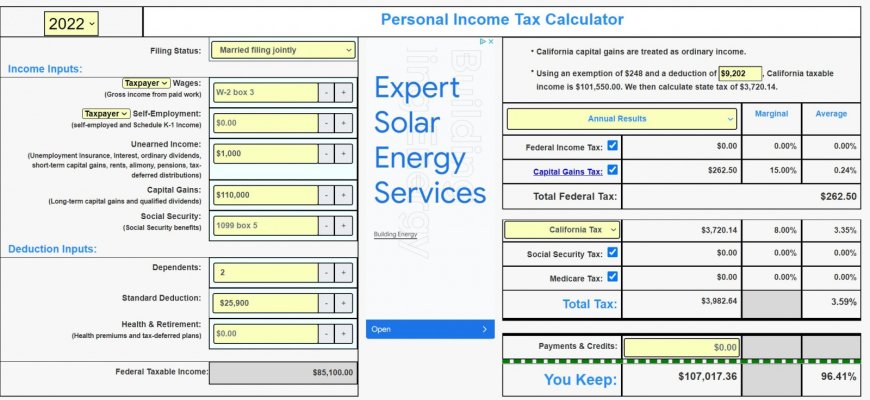leibowitzn
Confused about dryer sheets
- Joined
- Jun 1, 2022
- Messages
- 5
Hi, I'm working on fine tuning my retirement calculations.
The part I'm stuck on is how much tax I'll be paying when I retire early. I entered my data into taxcaster and dinkytown. Intuit Taxcaster says I'll get a refund while dinkytown says I'll owe $0.
Here's what I entered:
* married filing jointly
* 2 kids
* income comes from 3 sources
*** interest: $1,000
*** qualified dividends: $30,000
*** stock sales: $140,000
For stock sale I have no idea how to estimate the cost basis and capital gains. I made a rough guess of 50% would be capital gains and entered that (so I entered $70,000). (I'd love any advice on how to estimate this better.)
This meant my taxable income was around $100,000.
Does a $0 federal tax rate seem reasonable?
Also, any advice on estimating state taxes?
The part I'm stuck on is how much tax I'll be paying when I retire early. I entered my data into taxcaster and dinkytown. Intuit Taxcaster says I'll get a refund while dinkytown says I'll owe $0.
Here's what I entered:
* married filing jointly
* 2 kids
* income comes from 3 sources
*** interest: $1,000
*** qualified dividends: $30,000
*** stock sales: $140,000
For stock sale I have no idea how to estimate the cost basis and capital gains. I made a rough guess of 50% would be capital gains and entered that (so I entered $70,000). (I'd love any advice on how to estimate this better.)
This meant my taxable income was around $100,000.
Does a $0 federal tax rate seem reasonable?
Also, any advice on estimating state taxes?

